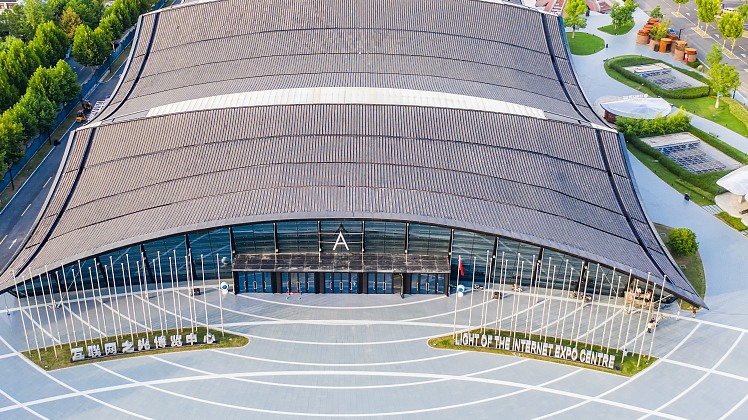
Wuzhen International Internet Exhibition & Convention Center /CFP
Wuzhen International Internet Exhibition & Convention Center /CFP
Editor's note: Gai Keke is a professor of School of Cyberspace Science and Technology, Beijing Institute of Technology. The article reflects the author's opinions and not necessarily the views of CGTN.
The white paper Community with a Shared Future in Cyberspace issued on Nov. 7 and the World Internet Conference Wuzhen Summit held on Wednesday have triggered a wide discussion on our future way in the digital world. It is predictable that developing a global shareable cyber world is almost an inevitable trend, which reminds me of a few technical buzzwords, including Metaverse, digital twin, blockchain, and virtual reality.
No doubt that picturing a bright future of the shared cyberspace explains how we dream about the prospects of next-generation technology. However, one of the spotlights that is drawing attention is how we secure and protect our data or privacy in this tangled digital world. It seems that security issues have become far more complicated than what we expected, along with the penetration of network and applications into all aspects of people's daily lives. We, indeed, need a compass to keep from getting lost in the fog.
Fortunately, the white paper has brought a systemic solution to guiding us towards a well-planned development direction concerning cyber security. A few key words pop up from the white paper, some of which imply opportunities in future security-related work, e.g., infrastructure, technical innovation, data governance, shared responsibility, regulation and law, education, and global collaboration. Meanwhile, the summit also emphasizes the vision of the community with a shared future in cyberspace.
Moreover, the digital world naturally is against isolation due to its network gene. Compared to contemporary settings that mainly offer connectivity and content delivery, future cyber space will also address value transfers. Security is a fundamental for achieving this goal.
From the perspective of technical innovation, we can see that efforts have been made by scholars and R&D institutes over the years to construct an infrastructure that offers multi-party secure sharing and interactions. In fact, the challenge remains to find solutions to achieving such secure sharing and interactions.
For instance, considering protection of data ownership or privacy, we are still looking for efficient and industry-friendly solutions to supporting computation from heterogeneous data sources without releasing raw data. Even though some emerging technologies, e.g., multi-party computation and privacy enhancing computation, have been introduced to the public, most of them are in an exploration stage or are restricted by constraints/conditions.
Another example is to use blockchain technology to make a trustworthy network environment, in which trust can be naturally established by the decentralized setting. This is also deemed to be an infrastructure of Metaverse as blockchain delivers value transfers based on consensus made by all involved parties. One of the challenges of adopting blockchain technology is to guarantee data authenticity before the data is recorded on the distributed ledger. One technology, blockchain, cannot address this issue. It requires support from other technologies, such as the Internet of Things and artificial intelligence. In reality, most explorations on applying emerging technologies have a long way to go.
To have an expressway going straight to the goal requires international collaboration. Technology innovation itself cannot directly solve issues. Developing and using technical solutions requires consensus accepted by nations throughout the world. For example, global standards and criteria are required for driving modern industrial development. In addition, International collaboration can speed up technical innovation as cross-border cooperation is an alternative for sharing technology advantages among nations. Currently, we see in many situations that the development of cutting-edge technology already highly relies on global collaboration. That's due to the increase in the difficulty of technological development.
In summary, network technology has enabled stronger globalization. In the future, global collaboration will drive all-dimensional technical innovations as well.